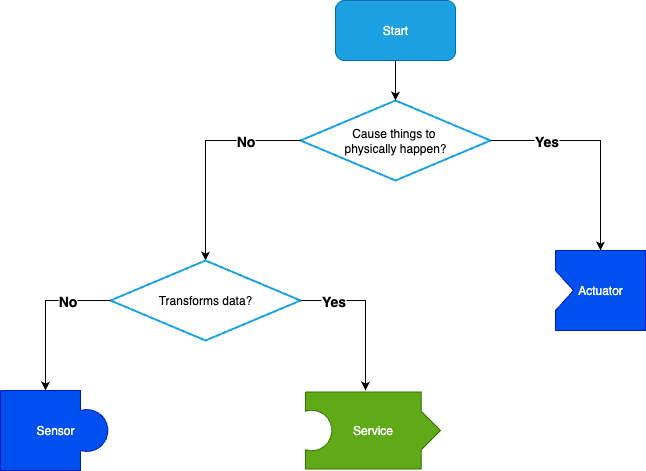Building Blocks of SIC
This section will guide you through the building blocks of the Social Interaction Cloud framework.
Components: Sensors, Actuators, and Services
You can picture creating a SIC application as a process of connecting components together, or building with Legos. Components are either Sensors, Actuators, or Services.
Sensors are the input devices that collect data from the physical environment.
Services are components that transform data from one format to another in a desirable way.
Actuators are the output devices that operate on the physical environment.

Breakdown of Component types in SIC.
Pictured below are some example setups of SIC Components:
Component diagram for a Dialogflow application using a Nao robot.
Component diagram for a Face Detection application using a Nao robot. It is possible to use the output of a Component as input to multiple other Components.
Component diagram for a Sentiment Analysis application. Note that some Services may require multiple input types.
Supporting Elements: ComponentManager, Connector, and Redis
In reality, SIC is a lot more than just Components. There are other elements that are used to support Components, namely:
ComponentManagers are responsible for starting and stopping Components on hosts/devices.
Connectors behave as remote controls and are the actual interface the user uses to interact with the Components.
Devices are the physical devices where the Components run.
Redis is the message broker that is used to communicate between the Components.
The SIC Application is the script the user writes that connects the Components together.
Example Application Diagrams
High-level diagram for a simple Dialogflow application.